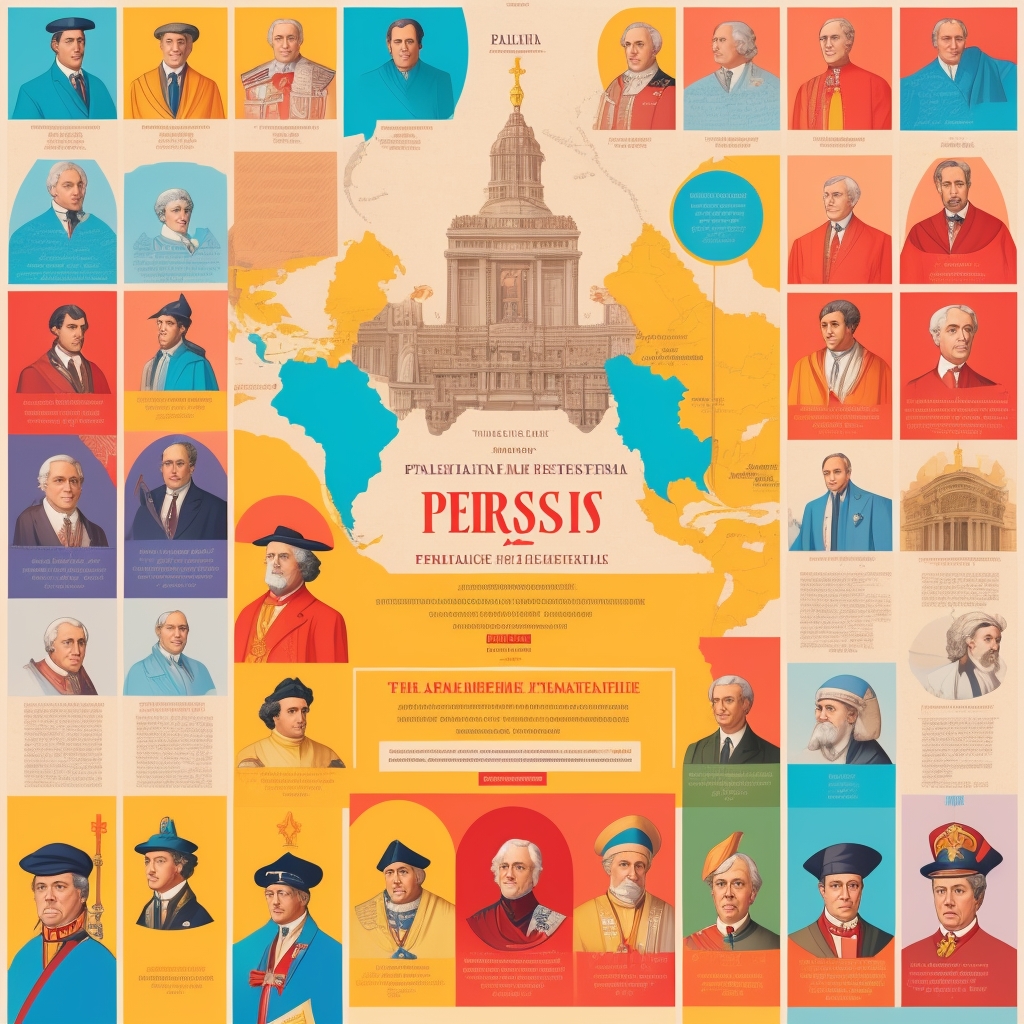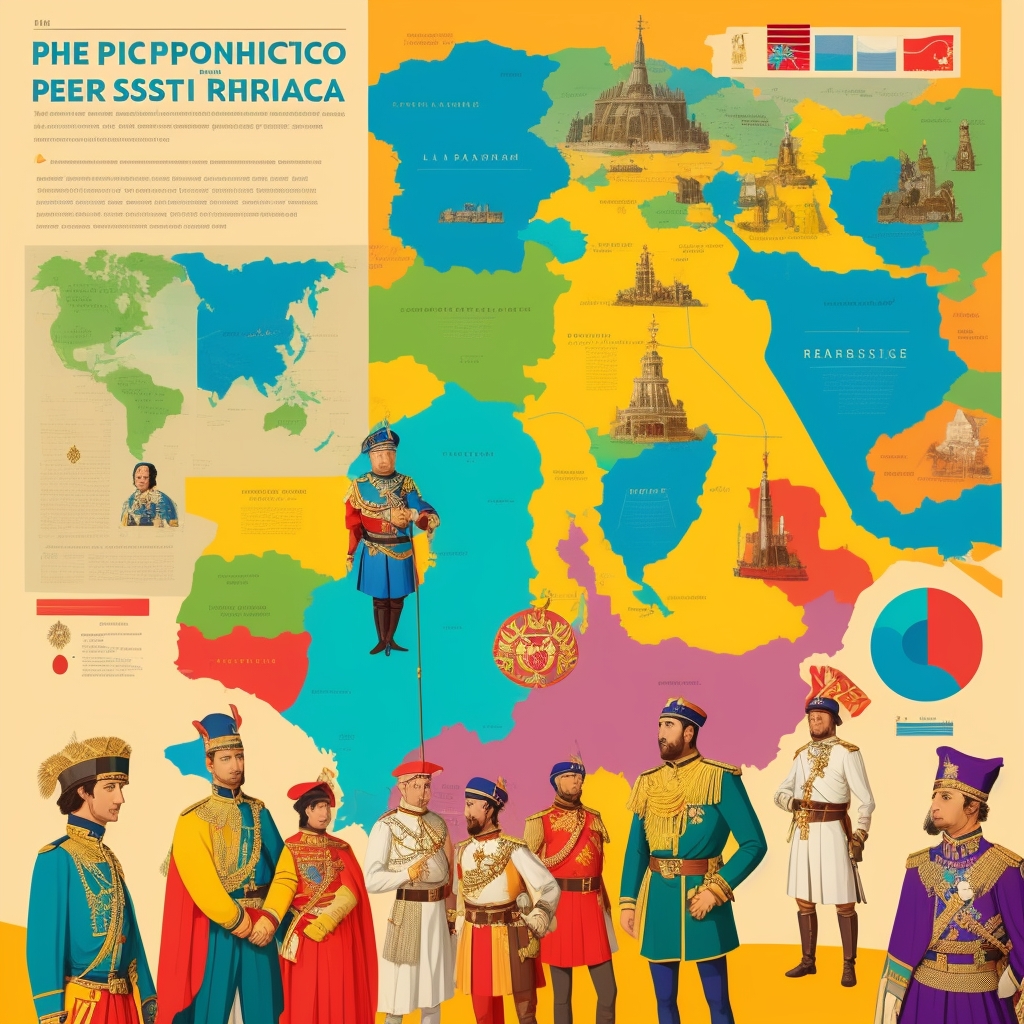How Did Religious Beliefs Shape Daily Life in the Persian Empire?
Introduction
The Persian Empire, truly renowned for its vast expanse and cultural sophistication, was, perhaps unsurprisingly, deeply influenced by its religious beliefs, particularly Zoroastrianism. This ancient faith didn’t just exist in the background; it played a pivotal role in shaping the social, cultural, and even practical aspects of daily life across the empire. What’s fascinating is how understanding this profound religious influence offers us a richer insight into the empire’s enduring legacy and its remarkable cultural richness. This article delves into the undeniable impact of religious beliefs on the Persian Empire, highlighting concrete examples, key takeaways, and the subtle “best practices” that truly defined this ancient civilization.
The Enduring Role of Zoroastrianism in Persian Society
Zoroastrianism, one of the world’s oldest monotheistic religions, wasn’t merely a state religion of the Persian Empire; it was, for significant periods, the dominant spiritual framework. Founded by the prophet Zoroaster (or Zarathushtra), its core tenets centered on the worship of Ahura Mazda, the supreme, benevolent god, and emphasized a profound duality of good and evil. Its adherents were encouraged to lead righteous lives, striving for “Good Thoughts, Good Words, and Good Deeds” to maintain cosmic balance – a concept that, frankly, was revolutionary for its time. It’s truly remarkable how these principles laid the groundwork for a sophisticated moral code that permeated society.
Influence on Governance and Law: A Framework for Order
Here’s the thing about a sprawling empire: you need a powerful, unifying ideology. The principles of Zoroastrianism were, therefore, deeply embedded in the governance and legal systems of the Persian Empire. The concept of Asha, representing truth, order, and justice, wasn’t just an abstract idea; it was fundamental in guiding rulers and administrators. This religious principle actively ensured that laws were crafted not just for control, but to promote fairness and equity, thereby reinforcing the empire’s unity and, quite remarkably, its stability across diverse peoples. It offered a moral compass for governance, a subtle but powerful force in maintaining order. From an expert’s perspective, this integration of ethics into statecraft is a primary reason for Persia’s long-term success.
Social Hierarchies and Roles: Divine Order in Daily Life
Beyond governance, Zoroastrian beliefs subtly yet significantly defined social hierarchies and roles within the empire. Society was thoughtfully organized into distinct classes, including priests (the influential Magi), warriors, and farmers, each assigned specific duties and responsibilities. The clergy, or Magi, held significant influence, acting as crucial intermediaries between the divine and the people, advising rulers, and performing rituals to maintain that all-important cosmic harmony. It’s a testament to the pervasive nature of the faith that even societal stratification reflected its core principles. This wasn’t merely about power; it was about maintaining a divinely ordained equilibrium, which is fascinating.
The Profound Impact on Daily Life and Practices
The religious beliefs of the Persian Empire truly permeated daily life, influencing everything from the most intimate family structures to the very practicalities of agricultural practices.
Rituals and Ceremonies: Connecting with the Sacred
Daily rituals and ceremonies weren’t just traditions; they were integral to Persian life, serving as a vital means to connect with the divine and ensure prosperity. Fire temples, for instance, played a central role, with fire considered a sacred symbol of purity and a direct representation of Ahura Mazda. Persians would participate in daily prayers and offerings, reinforcing their devotion and, quite personally, maintaining their spiritual well-being. It’s hard to overstate the importance of these regular, tangible acts of faith in binding communities together and providing a sense of purpose.
Agricultural and Environmental Practices: Stewardship of Creation
Perhaps one of the most forward-thinking aspects of Zoroastrianism was its profound emphasis on the sanctity of nature and the environment, actively advocating for sustainable agricultural practices. This deep respect for nature wasn’t just poetic; it directly influenced farming techniques, promoting practices like crop rotation and careful water management to preserve the earth’s precious resources. Farmers were encouraged to cultivate the land responsibly, reflecting a powerful religious imperative to protect creation – a concept that resonates strongly even with modern environmental ethics. Think about it: an ancient civilization prioritizing ecological balance!
Concrete Examples and Enduring Influence
The Royal Road and Seamless Communication
The very construction of the Royal Road, a truly monumental infrastructure project, strikingly exemplified the influence of Zoroastrianism on Persian innovation. This incredible feat of engineering facilitated not just communication but also trade across the vast empire, embodying the Zoroastrian values of connecting people and fostering unity. It’s a vivid example of how abstract religious principles could translate into concrete, highly practical benefits for the empire’s functioning. From a logistical standpoint, it was a masterclass in efficiency and cohesion.
The Unifying Role of Festivals
Religious festivals, such as Nowruz, the Persian New Year, were incredibly significant in uniting the populace and reinforcing a shared cultural identity. These vibrant celebrations, deeply rooted in Zoroastrian traditions, weren’t just holidays; they were marked by communal gatherings, feasting, and rituals specifically aimed at renewing the spirit and fortifying community bonds. What’s interesting is that even today, Nowruz is celebrated by millions worldwide, transcending religious boundaries and standing as a powerful testament to Zoroastrianism’s enduring cultural legacy.
Key Takeaways for Understanding the Persian Empire
- Integration of Religion and Governance: The seamless incorporation of religious principles into governance ensured not just justice and order, but also contributed significantly to the empire’s remarkable stability and longevity.
- Emphasis on Environmental Stewardship: Zoroastrianism’s deep reverence for nature fostered genuinely sustainable practices, laying the groundwork for long-term agricultural success and resource management.
- Cultural Unity Through Rituals: Regular religious rituals and festivals weren’t mere formalities; they actively promoted social cohesion and cultural continuity, proving instrumental in the empire’s resilience.
FAQ
What was the main religion of the Persian Empire?
The main religion of the Persian Empire was Zoroastrianism, a monotheistic faith centered on the worship of Ahura Mazda and the duality of good and evil.
How did Zoroastrian beliefs influence Persian governance?
Zoroastrian principles, particularly the concept of Asha (truth and justice), were integral to Persian governance, guiding the creation of fair and equitable laws and fostering moral accountability.
What role did fire temples play in Persian society?
Fire temples were central to Zoroastrian worship, symbolizing purity and the divine presence of Ahura Mazda. They were crucial sites for rituals, daily prayers, and community gatherings.
How did religious beliefs shape Persian agricultural practices?
Zoroastrianism’s emphasis on environmental stewardship promoted sustainable farming practices, encouraging responsible land management, crop rotation, and resource conservation.
What is the significance of Nowruz in Persian culture?
Nowruz, the Persian New Year, is a major festival rooted in Zoroastrian tradition, symbolizing renewal and unity. It involves communal celebrations and rituals that strengthen cultural identity and is still celebrated globally today.
Conclusion: An Enduring Legacy
Religious beliefs, particularly Zoroastrianism, were undeniably a cornerstone of daily life in the Persian Empire, shaping its cultural and social aspects in profound and often surprising ways. From guiding governance and legal systems to influencing agricultural methods and fostering social unity, the principles of truth, order, and deep respect for nature permeated every facet of society. What’s truly remarkable is how these ancient ideals laid a foundation that, as modern scholarship continues to reveal, influenced later Abrahamic religions and continues to resonate in contemporary discussions about ethics, governance, and environmental responsibility.
While Zoroastrianism is a comparatively small faith today, with a global population estimated between 100,000 and 120,000 adherents, primarily in India, Iran, and North America, its historical impact is immeasurable. Understanding these influences provides invaluable insight into the Persian Empire’s astonishing success and its enduring legacy. As we reflect on this ancient civilization, we recognize the timeless power of religious beliefs in shaping human societies, a power that, in the case of Persia, truly built an empire. For further reading on Zoroastrianism and its historical impact, I highly recommend exploring resources such as the Encyclopedia Iranica, and for more current academic perspectives, consider works like Paulina Niechciał’s “Zoroastrian Minorities” (2024), which offers a fascinating look at the faith’s modern communities.
Sources
- Encyclopædia Iranica. Wikipedia.
- Niechciał, Paulina. “Zoroastrian Minorities”. Parsi Khabar, 3 Oct. 2024.
- Encyclopaedia Iranica Online. Brill.
- Encyclopaedia Iranica. ETANA.
- Encyclopaedia Iranica online. University of Edinburgh.
- Encyclopaedia Iranica. Columbia University.
- “Zoroastrian Population by Country 2025”.
- “Zoroastrianism”. Wikipedia.
- Niechciał, Paulina. “Eventisation of religion: the 12th World Zoroastrian Congress in New York City as an identity-oriented event”. Journal of Contemporary Religion, 27 May 2024.
- “List of countries by Zoroastrian population”. Wikipedia.
- “List of religious populations”. Britannica.
- Niechciał, Paulina. “INTR 242W Identity Politics in Poland, Tajikistan, and Iran MW 10:25–11:40 Spring 2024”. School of Arts & Sciences.
- “World Religions Zoroastrianism”. The Third Well.
- “ZSO News”. Zoroastrian Society of Ontario.
- Niechciał, Paulina. “Constructing Zoroastrian identity in Muslim Iran”. Západočeská univerzita v Plzni.








